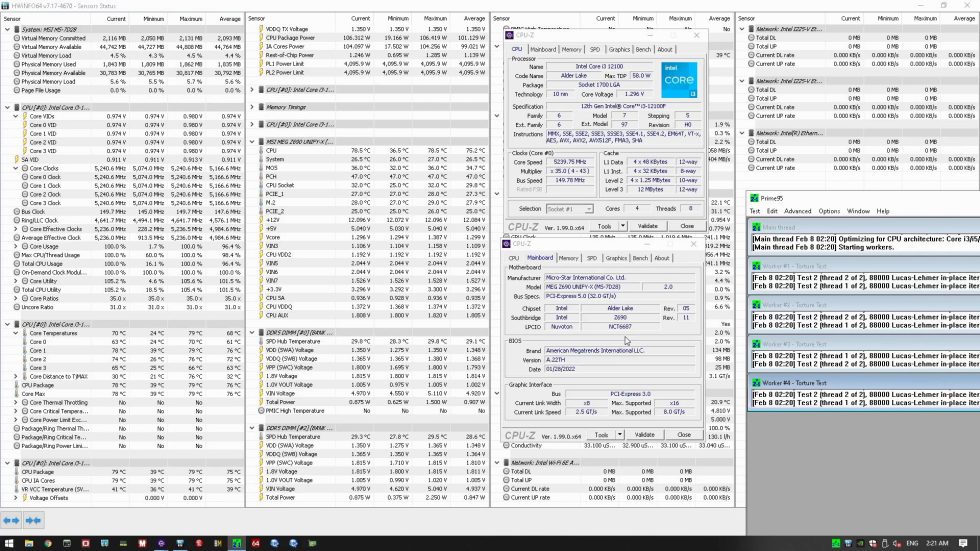Benchmarking
The higher and faster the stable limit of the RAM can be determined, the easier it is to explore the limits of the hardware and chase benchmark high scores. For example, with the same voltages as with the TM5-stable 6800 Mbps configurations on the last page, 7000 Mbps can also be set for benchmarking. And again, I would like to point out that these settings then also simply train on the first go and deliver reliable performance and relative stability.
Those who already have experience with Z690 and DDR5 will know how important this aspect alone is. On other boards, you often have to train lower frequencies first and “slowly introduce” the hardware to the fastest setting for benchmarks. On yet other motherboards, some RAM ratios can only be booted in 1 out of 10 attempts, for example, which is of course just as troublesome. And it’s exactly the time and frustration you spend setting the settings on other boards that can be redirected to fine-tuning and benchmarking on the Unify-X.
A22 bios for the @msigaming MEG Z690 Unify-X reintroduces AVX-512 with microcode selector switch in the bios. This is amazing for enthusiast fans of performance and actual efficiency!
world-fastest 8-core cpu on ambient cooling in y-cruncher! 😍😍😍https://t.co/6cNg3g9pi6 pic.twitter.com/yNM9Q1tWBT
— Xaver Amberger // cancel µcode 18! 🔥 (@skullbringer123) January 30, 2022
After Intel subsequently pulled the microcode break for AVX-512, MSI was also one of the first motherboard manufacturers to revive the feature again with the Z690 Unify-X. A supposedly simple microcode selector switch allows loading an older microcode here, with which the instruction set can still be used. Especially for some benchmarks like y-cruncher, this instruction set is not only worth performance but also efficiency, but we already showed that last year.
When you put all these advantages together, the support of AVX-512, the extremely easy DDR5 overclocking, the effortless use and the potent hardware design of the motherboard, the result can really only be absolute top performance. And there you go, for a few weeks now the MSI Z690 Unify-X with my delidded Alder Lake i9-12900K CPU has held the current world record for y-cruncher 2.5b with 8-core CPUs, and that’s just with water cooling mind you.

Non-K Overclocking
Since the launch of the small “P-Core only” Alder Lake CPUs in January this year, so-called “non-k” overclocking has become popular again, not least because of the high performance of the Golden Cove cores. The principle here is that even CPUs without a “k” suffix in their name, i.e. without an unlocked multiplier, can be overclocked by increasing the BCLK. However, this requires an external clock generator on the motherboard, which the Z690 Unify-X has.
Now only a corresponding BIOS was missing, since the right microcode has to be used again so that Intel doesn’t involuntarily pull the handbrake. And MSI promptly delivered exactly that with a corresponding “TH” or “TC” update for the A22 BIOS, where the H or C stands for the hardware stepping of the installed CPU which has to match up. So now even an i3 CPU can be run at over 5.2 GHz in Prime 95 Small FFTs with AVX-512 – really nice. Now if MSI could bring this feature to a cheaper DDR4 board, it would truly be an unbeatable price-performance combination for gamers… but I digress.




































5 Antworten
Kommentar
Lade neue Kommentare
Urgestein
Veteran
Veteran
Veteran
Veteran
Alle Kommentare lesen unter igor´sLAB Community →